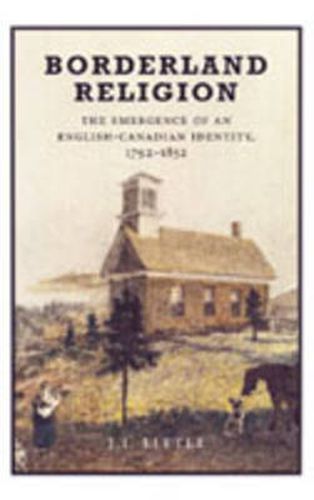Readings Newsletter
Become a Readings Member to make your shopping experience even easier.
Sign in or sign up for free!
You’re not far away from qualifying for FREE standard shipping within Australia
You’ve qualified for FREE standard shipping within Australia
The cart is loading…






Since colonization, Canadians and Americans have viewed religious matters differently. While this is not surprising given contemporary Canadians’ reluctance to embrace U.S.-style social conservativism, the roots of the phenomenon are seldom examined. J.I. Little seeks to correct this oversight with Borderland Religion. Focusing on the settlement period of the Eastern Townships region of Quebec, Little addresses the role played by religion in forging a distinctive national identity for English-Canadians. While radical evangelical churches and sects developed in the hill country of New England, they failed to gain a strong foothold in the neighbouring Eastern Townships despite the majority of the population there being of American origin. Rather, the British-based Church of England and Wesleyan Methodist Society became much the largest denominations in this border region. Borderland Religion is effectively a borderlands study in reverse. Rather than examining the dynamics of contact between two distinct cultures in a common geographical space, or middle ground, it explores how a common culture became differentiated on either side of an international boundary line. In the process, it also illuminates the woefully neglected history of Protestantism in Quebec.
$9.00 standard shipping within Australia
FREE standard shipping within Australia for orders over $100.00
Express & International shipping calculated at checkout
Since colonization, Canadians and Americans have viewed religious matters differently. While this is not surprising given contemporary Canadians’ reluctance to embrace U.S.-style social conservativism, the roots of the phenomenon are seldom examined. J.I. Little seeks to correct this oversight with Borderland Religion. Focusing on the settlement period of the Eastern Townships region of Quebec, Little addresses the role played by religion in forging a distinctive national identity for English-Canadians. While radical evangelical churches and sects developed in the hill country of New England, they failed to gain a strong foothold in the neighbouring Eastern Townships despite the majority of the population there being of American origin. Rather, the British-based Church of England and Wesleyan Methodist Society became much the largest denominations in this border region. Borderland Religion is effectively a borderlands study in reverse. Rather than examining the dynamics of contact between two distinct cultures in a common geographical space, or middle ground, it explores how a common culture became differentiated on either side of an international boundary line. In the process, it also illuminates the woefully neglected history of Protestantism in Quebec.